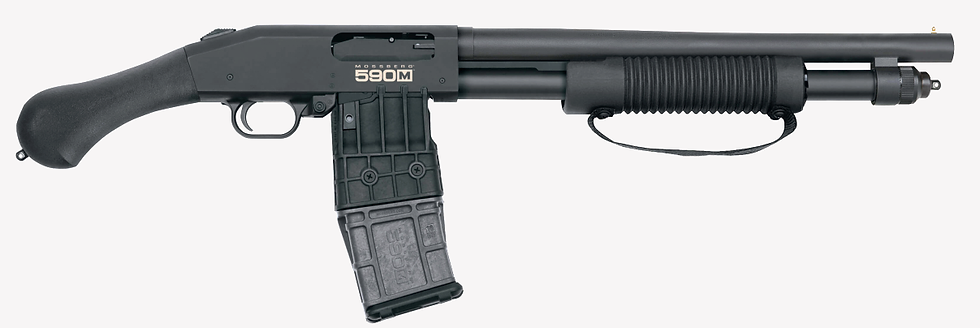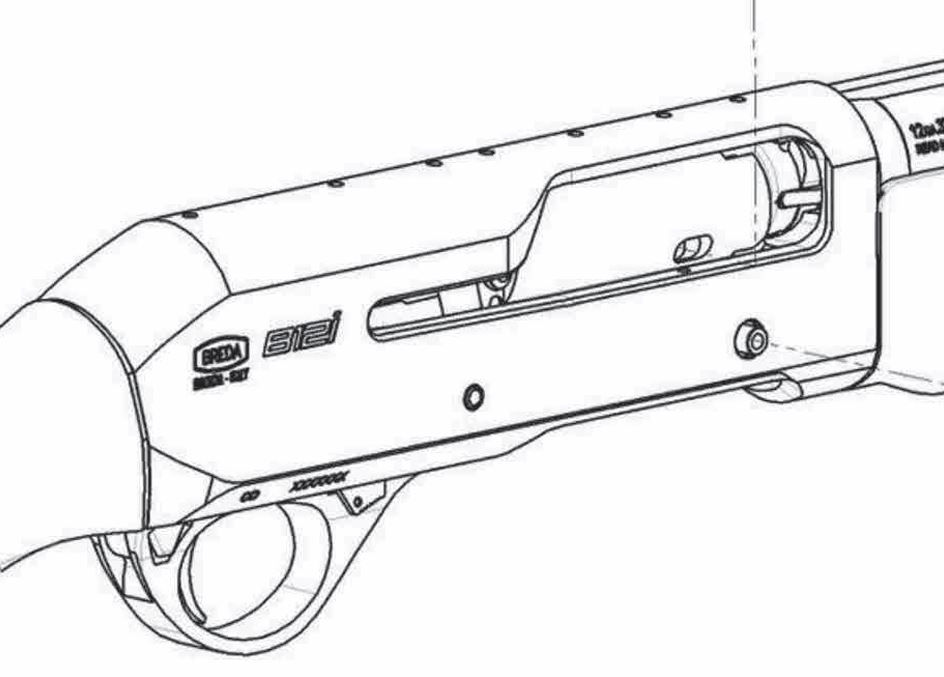The Myth of the Standard Shell
- Rus Hinkle

- Aug 12, 2024
- 4 min read

The metallic firearm cartridge was first invented by Swiss gunsmith Samuel Pauly in 1812. After the American Civil War nearly 60 years later, the Western world finally recognized the advantages of the self-contained metallic cartridge, and scrambled to develop and adopt them into military service. Shotguns were no exception. Original black powder shotgun shells were made entirely of brass with usually a paper or cork wad to seal them. Around the 1870s, paper shotgun cartridges began to commonly appear on the market and lasted until the mid-1960s when plastics were perfected.
Many people will often mistakenly assume that a shotgun that says “for 3in shells or 2-3/4in” shells can load and fire every 3” and 2-3/4” shell on the market. This is sadly not the case. This indication, which is usually engraved on the barrel, only designates the chamber length, and which shells are safe to fire in this chamber length.
If you were to measure a 3” unfired shell from the base of the rim to the end of the crimp, you will note that it does not measure 3”, but rather closer to 2.7” overall. Why is that? This is because the chamber length designation corresponds to the overall length of the shell once fired. Ergo, a 3” shell must not exceed an overall length of 3” when the shell is fired and the crimp is expanded. Not every 3” shell will actually measure out to 3” when fired, it just cannot exceed 3”.

Photo credit: Fieldsports Channel
Certain 3.5” shells may also fit into a 3” chambered gun. Why is that? The overall length of the 3.5” shell, when unfired, may only measure 2.9”. Loading a 3.5” shell into a 3” chamber can lead to a potentially deadly situation. Not only do 3.5” supermagnums typically burn at higher pressures than 3” magnums, but more importantly, there is usually not enough room for the crimp to fully open. This leads to what is essentially a barrel obstruction right in the forcing cone. The result could look similar to this:

Note that this catastrophic failure of a Remington 1100 is the result of a bad handload, but putting a 3.5" in a 3" chamber can similarly result.
Now, I have not done a scientific knock-out peer-reviewed study on the subject, but any experienced gunsmith will tell you the overwhelming majority of barrel explosions, regardless of make, model, or chambering, will be caused by a bore obstruction. Very seldom does a barrel explode due to poor metallurgy. A bore obstruction can range from something incredibly serious as a squibbed projectile or wad, or to something as simple as a cobweb. Anything that allows pressure to build up inside the barrel and prevents it from moving forward is a barrel obstruction. Every so often someone will accidentally (or purposefully) put the wrong ammo into a gun or over-pressure a handload (see above). I had a customer once blow up his grandfather’s side-by-side that sat loaded for over 40 years in a barn- mud dauber wasps had built a nest halfway down the left barrel. Point is the overwhelming majority of kabooms are due to bore obstructions.
So why does the crimp being able to open matter? If the crimp is not able to fully open and allow the shot and wad to safely pass through it, it will obstruct the shot and/or the wad, thus leading to a pressure buildup. Ergo, if you load a 3.5” shell into a 3” chamber, but it fits, there is a high probability that the 3.5” shell will damage the gun, or shooter.

Photo credit: KT Gunsmith
It is also widely unsafe to fire shells that are too short for the chamber. This is because the chamber area between the end of the chamber and the end of the shell is larger than the shell itself. This negative space inside the chamber between the end of the shell and the forcing cone is called “void”. As the shot nor wad are even remotely stabilized on all 3 axis, there is a possibility of the shot, shot cup, or wad just deciding to go sideways inside the void, causing an obstruction. The forcing cone succeeding the chamber is there to minimize and re-stabilize any shot or wads that may decide to go their own way inside the chamber, but the possibility is still present.
Another issue encountered in the modern era is the advent of the box magazine-fed shotguns. The issues here are in fact twofold. Firstly, shotgun shells are rimmed cases, so the possibility of rimlock is ever present. Secondly, the issue of the aforementioned overall length persists. As shells’ overall lengths are not standardized, one brand of shell may fit into a magazine, but the other will not. I had a customer a while back purchase a Mossberg 590M for home defense, and wanted to keep a magazine loaded with rubber buckshot. The Mossberg 590M is a 2-3/4” chambered gun, the magazine says “for 2-3/4” shells only, and this customer purchased Sellier and Bellot 2-3/4” double rubber ball shells. Sadly, the S&B shells could not be loaded into the magazine, as their overall length was 2.73”, and the magazine body could only accept a shell that was shorter than 2.67”.

Photo credit: OF Mossberg & Sons Inc.
These two factors are the primary reason that most shotguns, even modern, still use antiquated tubular magazines. The exact overall length of the shell does not particularly matter in a tube magazine. It does, however, matter for the feed mechanism, as some shells are simply too long to feed in certain actions.
I encourage you, the reader, to grab your own shells that you have and measure them. You will find that their overall lengths, and even sometimes the diameter of their rims, wildly vary from not only brand to brand, but sometimes even shell to shell. The overarching point I’m driving at here is that there is no such thing as a “standard” 2-3/4”, 3”, or whatever shell like we see in the rifle and pistol worlds. In the shotgun world, only the minimum and maximum values matter, and the gap between the two is wide enough to fit the USS Enterprise through.
Rus Hinkle
Banshee Brands Lead Gunsmith



Comments